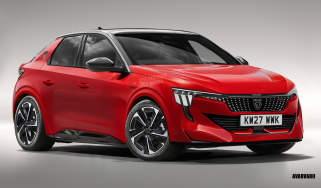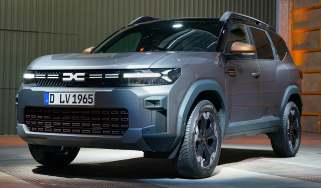Dodge Viper (Mk1, 1992-1996) icon review: the ultimate American sports car
The V10-powered Viper offers good old-fashioned brawn by the bucketload
We’re on a long, straight and wide stretch of B-road at the top of the Isle of Man. The road is deserted and because we’re in the middle of nowhere on this island in the Irish Sea, there’s no speed limit. Plus we’re in a sports car with an 8.0-litre V10 engine. Does it get any better than this? Well, yes, because the sports car is a Dodge Viper, but if we said that the driving experience served up by this car is as good as its exterior design, we’d be lying through our teeth. The Viper is undoubtedly sensational to look at, but sadly its dynamic abilities aren’t quite so impressive...
We had our first glimpse of the Viper as a concept car 35 years ago, at the Detroit Motor Show. Chrysler president Bob Lutz was on a mission to come up with a modern day AC Cobra (he owned one), and he tasked Chrysler design vice president Tom Gale along with chief engineer François Castaing with creating a wild two-seat sports car with a huge engine; the latter would be a ludicrous 8.0-litre V10 prototype truck powerplant.
When the car was unveiled, Lutz announced that if enough interest was shown, the Viper would go into production; the company was inundated with letters of interest, some of which had cheques attached to show the desire was deadly serious. Despite this, the Viper would never be a big seller or massively profitable, and with a development budget of just $50m (£39.6m, which it exceeded by $20m/£15.8m), Chrysler created a production-ready car in a mere three years.
The development team had to ensure that the Viper was faster than a 7.0-litre AC Cobra 427, which could do 0-60mph in 4.5 seconds, 0-100mph in 10 seconds and 160mph flat out. With 400bhp and 630Nm of torque, the Viper could match or beat all of these figures, and when the first production cars were made at the end of 1991, it was clear that apart from its jaw-dropping looks, this was essentially just a one-trick pony. The car was blisteringly quick, but the flimsy fabric roof was an afterthought, there was no air-con (although this was optional from 1994), anti-lock brakes or airbags, while the doors were devoid of handles or locks. And the build quality was decidedly approximate, if not necessarily that much worse than Chrysler’s more mainstream production models.
With the car priced at $52,000 (£30k at the time), Chrysler reckoned that it could make a profit if it could sell 3,000 per year. In reality, sales peaked at 3,083 units in 1994, and it was downhill from there. Production averaged just three cars per day in 1992, which was the first year of production, by the end of which just 285 cars had been made – and the car here is one of them. Owned by Darren and Denis Cunningham as part of their collection in the Isle of Man Motor Museum, this Viper is seemingly little better than the pre-production prototypes in terms of quality.
The interior plastics are poor and once the engine has warmed up, the doors can barely be opened; the side exhausts heat everything up causing the doors to expand in their apertures.
The ergonomics are pretty suspect too. Not only is much of the instrumentation not visible most of the time (the rev counter was almost completely hidden for us) thanks to the chunky steering wheel, but you can’t put the seatbelt on without the door being closed, because bizarrely, it’s mounted to the door itself. Even with the seat as far forward as it could go, shorter drivers will only just be able to reach the pedals. There are no door handles on the outside, so you have to reach in to open up, which doesn’t allow for the fitment of any windows.
Settle into the seat, which has no rake adjustment, fire up the monstrous V10 – and the lack of drama is the biggest surprise of all. Having braced ourselves for an assault on the senses, the muted sound of the V10 is quite a letdown. We expected a bellowing roar from the engine as well as those side pipes, but even when pushed hard, the Viper doesn’t sound nearly as anti-social as you would imagine. You have to push well into ASBO territory before it gets loud, by which point you’re in danger of leaving the road in a sea of flailing elbows. Try too hard, and this is one snake that will bite you hard, rather than forgive.
Which takes us back to that B-road on the Isle of Man. As with so many roads on the island, which aren’t part of the TT circuit, ‘gentle undulations’ are par for the course. Except at speeds of more than about 50mph, those undulations feel anything but gentle in the Viper, which seems to amplify them rather than soak them up. It took Chrysler a little while to latch on to this fact, but in 1995 a significant suspension redesign was incorporated in a bid to tame the Viper.
Hanging on for dear life, and focusing exclusively on keeping the car on the road rather than looking at the speedo, we reckon we got up to 70mph-80mph, and the experience felt more like riding a rodeo horse – it’s best to back off and simply enjoy the V10’s effortless torque. The red line is at 6,000rpm, there’s maximum power at 4,600rpm, while the torque peaks 1,000rpm lower, by which point the fuel gauge is heading south very rapidly. On a run, 20mpg is allegedly possible, with 15mpg a more typical average; have some fun, and single-figure fuel consumption is the order of the day.
At just 500rpm the Dodge will trickle along, which in sixth gear equates to 51mph; floor the throttle and there’s no hesitation as the naturally aspirated V10 allows the Viper to gather speed without fuss. While the steering and brakes offer little in the way of feedback, they’re effective enough.
The hideously agricultural gearchange leaves a lot to be desired though; it’s easy to wrong-slot it, with changes from second to fifth a particular speciality. It’s a good job it doesn’t make a lot of difference what gear you’re in; the V10 is so tractable that it masks ham-fisted driving up to a point. It’s just a shame that the rest of the package feels so unfinished.
Despite the Viper selling in modest numbers, Chrysler continued to develop it. And in 1995 a facelifted edition introduced a removable hard top, a conventional exhaust that exited at the rear, and more power, along with a GTS coupe option.
A heavily redesigned second-generation Viper emerged in 2002, with a 500bhp 8.3-litre V10. Initially sold only as a roadster, once again a coupe followed, in 2005, then in July 2010 the final Dodge Viper was made.
Or so it seemed, because in April 2012 a third-generation car was unveiled, now with an 8.4-litre engine rated at 640bhp. It was the most highly developed of the lot and the best Viper yet, but sales were very slow. However, Chrysler persisted until August 2017 when the final car was made, 26 years after that first prototype had broken cover.
One of the very first examples produced, the Viper pictured here misses the mark in so many ways, but continuous development turned the Viper into a more user-friendly car that’s much better to drive. So it’s a shame that we’ll probably never see anything like it ever again, in a world that’s much more eco-conscious than it was when the Viper burst on to the scene in the late eighties.
Interested in buying one?
In 1993 the Viper landed in the UK, but in left-hand drive and painted red only; fewer than 70 were sold. Priced at £55,000, these cars were badged as Chryslers, while any personal imports wear Dodge badges. The chances of finding a first-gen Viper for sale here is slim, so you’ll probably have to shop in the US, where Mk1s range from $35k (£28k) to $55k (£44k).
Avoid any Viper that needs new body panels or significant repairs, because major parts have been unavailable for years. If they do turn up, they’re pricey. At least the Viper’s construction is simple, so inspection is easy and so are most mechanical repairs.
While the engines are tough, pre-1996 V10s can suffer from head gasket failure, which is costly to fix. Gearboxes are also very strong, but clutches last no more than 30,000 miles and are expensive to replace.
| Model: | Dodge Viper Mk1 (SR I) |
| Production dates: | 1992-1996 |
| Price then: | £55,000 (1993) |
| Price now: | £28,000-£44,000 |
| Engine: | 8.0-litre V10 petrol |
| Power/torque: | 400bhp/630Nm |
| Transmission: | Six-speed manual, rear-wheel drive |
| 0-62mph: | 4.6 seconds |
| Top speed: | 167mph |







